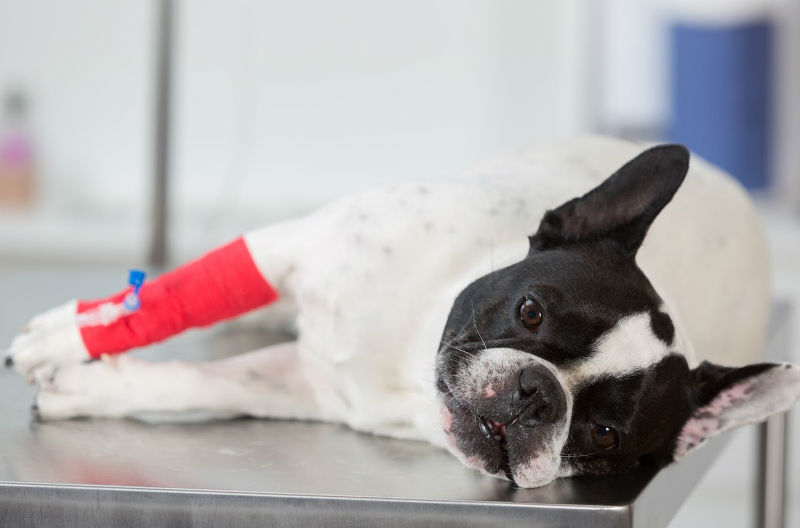My dog just came home from the vet with a bandage. What is the difference between a bandage and a splint?
Bandages are mainly used to protect a wound, incision or injury while it is healing. A bandage protects the wound surface from contamination with dirt or debris from the environment. It may be used to cover a layer of topical medication that was applied to the wound, preventing the medication from being rubbed or licked off. In some cases, a bandage is used to hold an injured part of the body against another part of the body, such as bandaging an injured ear to the head or bandaging an injured toe to the other toe on that foot.
Splints are used to provide protection and support to an injured area of the body, usually a limb. They serve the same protective functions as a bandage does and have the additional benefit of preventing movement of the injured part. If a splint is used to support a fractured bone, it will be applied so that it immobilizes both the joint above and the joint below the fracture.
Both bandages and splints protect the underlying tissues from self-trauma such as licking, which will delay healing and may promote infection. The most important thing to know about bandages is that small bandages such as we use to protect our own wounds do not work well on animals. The pet’s haircoat prevents an adhesive bandage from sticking well to the skin and a small bandage is easy for your pet to pull off. As a rule, pets don’t like anything that is stuck to their hair or skin and will usually take it off. This makes our job and yours much harder once you get them home! This is why protective bandages that are applied to pets will always be made up of several layers of bandage material and whenever possible they will wrap entirely around the body part that is being protected.
How often does the bandage or splint need to be changed?
If the wound beneath the bandage is infected, the bandage will need to be changed as often as twice per day for the first few days until the infection is under control. Since the purpose of a splint is to help immobilize an injured body part, it is usually changed less frequently. In rapid growing puppies, the splint may need to be changed weekly to allow it to be adjusted for proper fit. Adult animals may have a splint left in place for several weeks.
How do I care for my pet’s bandage or splint?
General bandage and splint care includes keeping the bandage clean and dry, making sure it does not slip or become too tight and checking for any discharge or foul smell. If any of these things occur, contact your veterinarian right away. It’s a good rule of thumb to check the bandage at least twice a day making sure it’s not too lose or too tight. If the toes are exposed, check the toes twice a day for signs of swelling or bad smells. Do not allow your pet to lick or chew at the bandage. If your pet continues to bother the bandage, it may be necessary to use a cone. Do not remove the splint or bandage at home. If your pet removes the bandage, contact your veterinarian immediately. Restrict exercise and remember, do not allow the bandage to get wet. Booties or plastic bags and duct tape work well for this! Oh and don’t forget, lots of snuggles, cuddles and treats while they heal!
Written by Van Isle Veterinary Hospital




